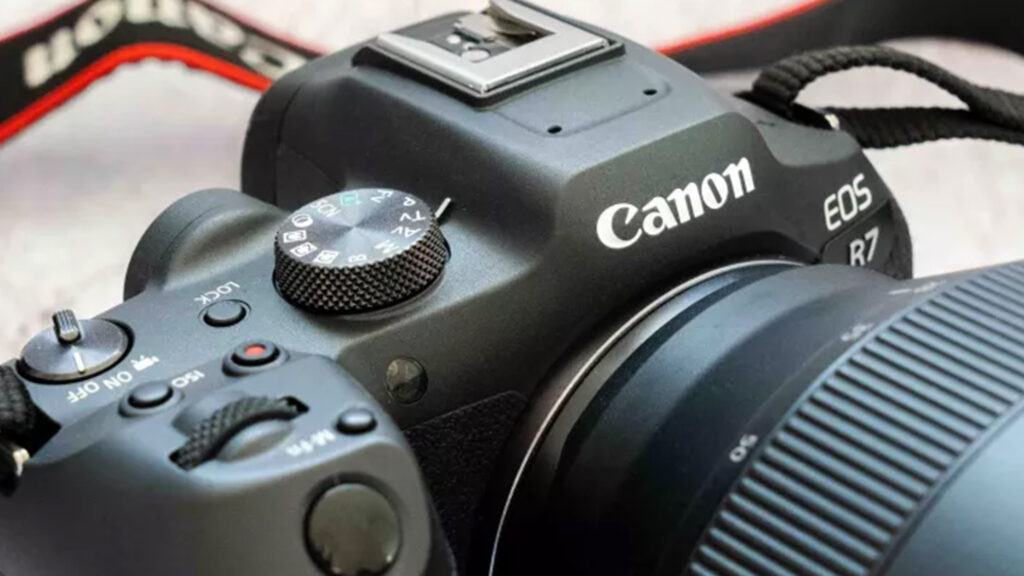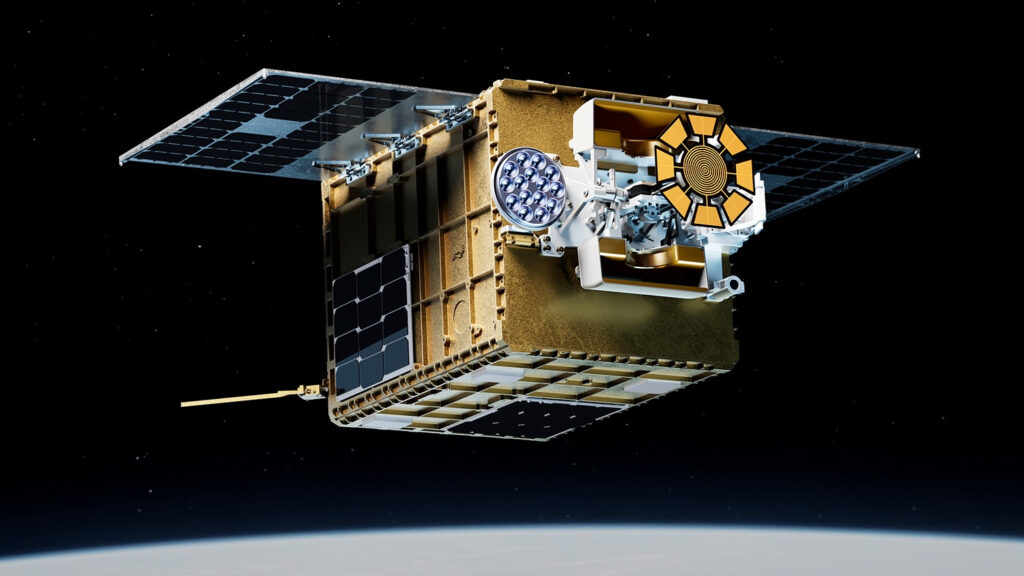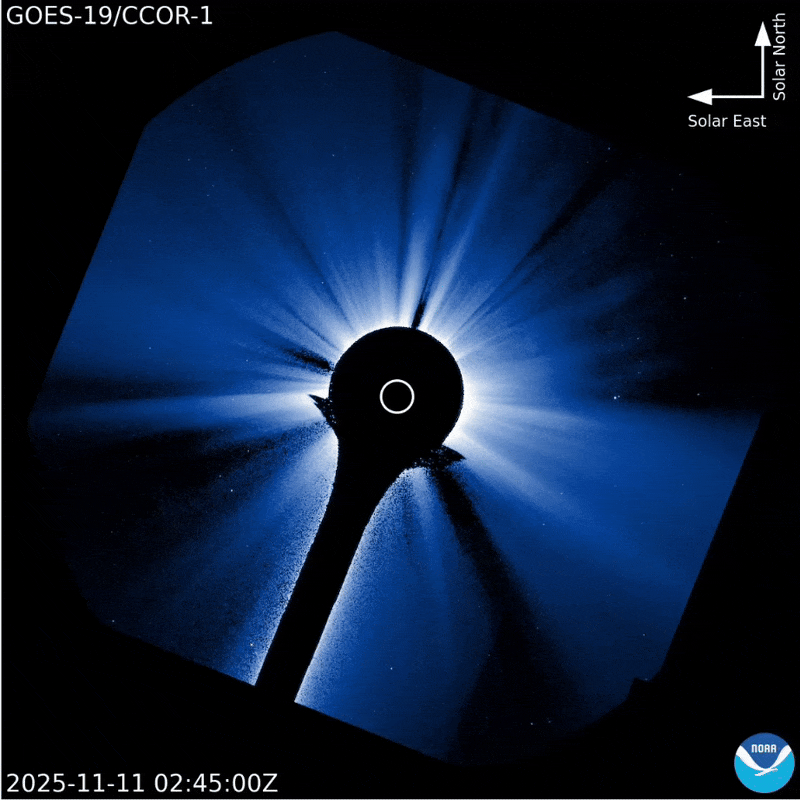Now Reading: NASA’s Artemis 2 moon rocket comes together | Space photo of the day for Nov. 21, 2025
-
01
NASA’s Artemis 2 moon rocket comes together | Space photo of the day for Nov. 21, 2025
NASA’s Artemis 2 moon rocket comes together | Space photo of the day for Nov. 21, 2025
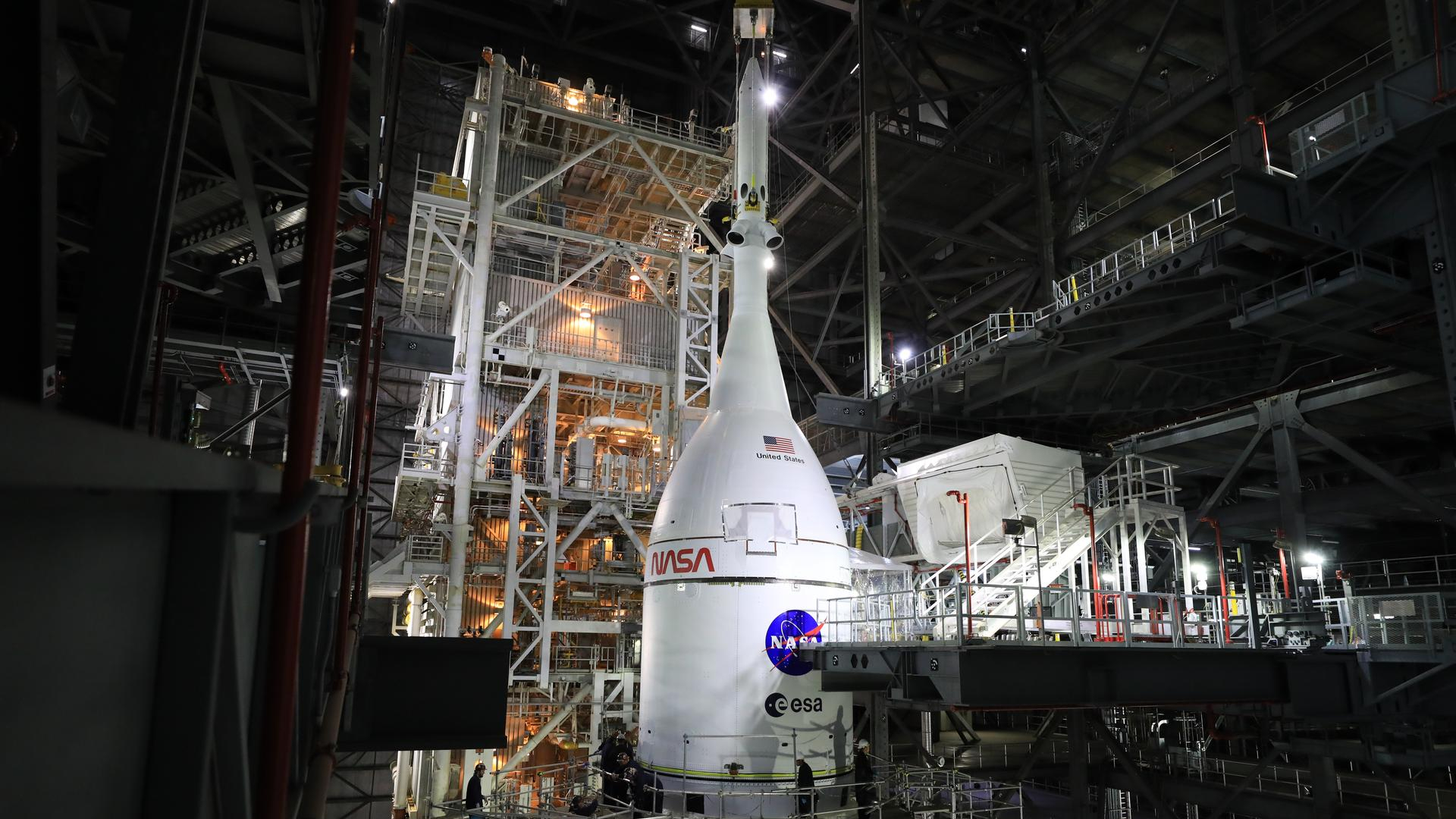
NASA has reached one of its key steps on the road to returning humans to the moon, as NASA’s Exploration Ground Systems team successfully lifted and integrated the Orion spacecraft atop the Space Launch System (SLS) rocket. The operation marks a major step toward the Artemis 2 mission, which is set to send astronauts around the moon in early 2026.
What is it?
The mission will follow a hybrid free-return trajectory, allowing Orion to loop around the moon and head back toward Earth using gravitational forces, an important safety feature for early crewed missions. Throughout the roughly 10-day journey, the crew will conduct evaluations of life-support performance, spacecraft maneuvering, communication systems and other mission-critical functions needed for future lunar landings.
Where is it?
This image was taken at High Bay 3 of the Vehicle Assembly Building (VAB) at NASA’s Kennedy Space Center in Florida.
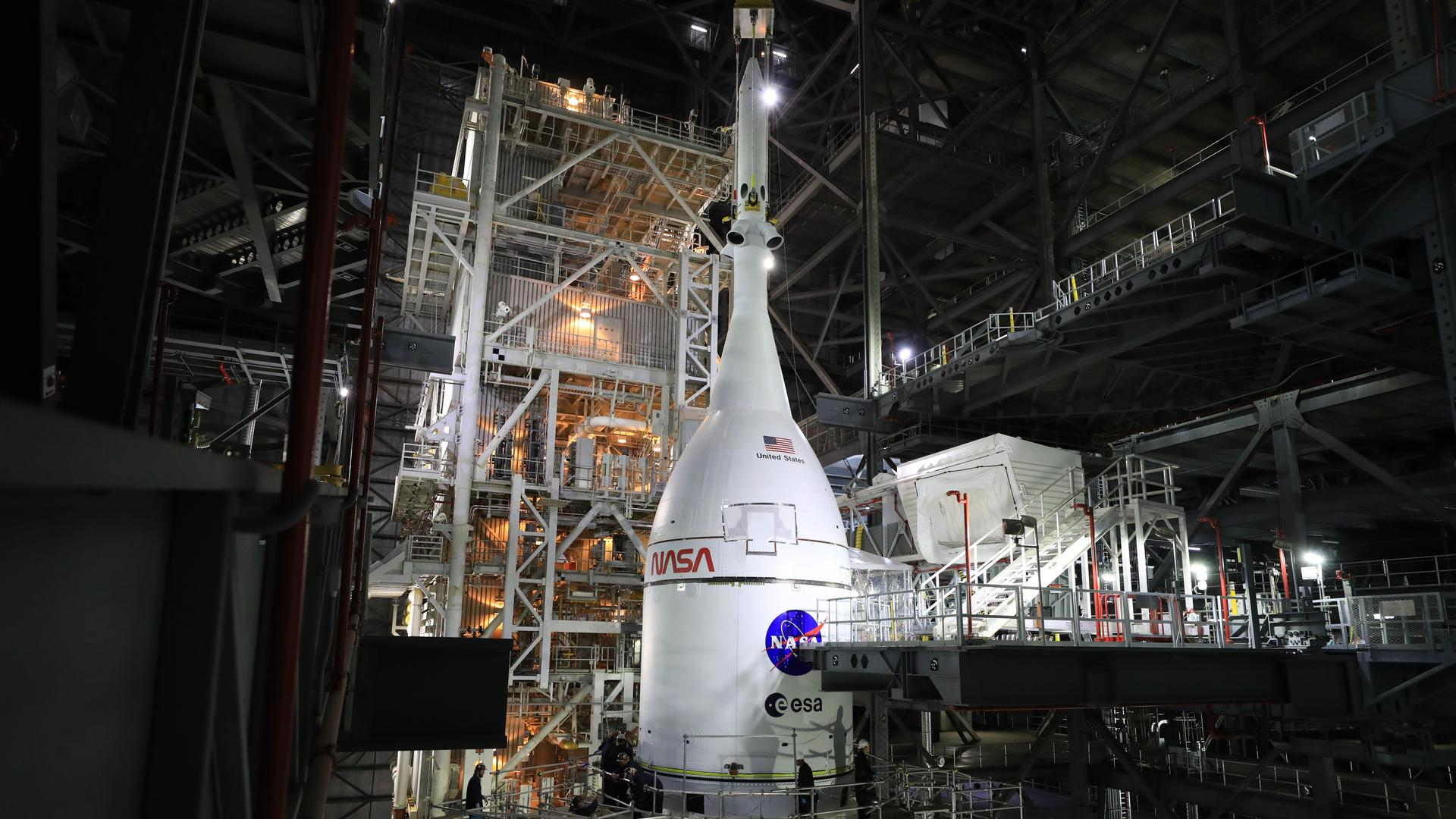
Why is it amazing?
During Artemis 2, Orion will serve as both transport and habitat for the four-person crew. The spacecraft includes advanced guidance and navigation systems, radiation protection features, state-of-the-art avionics and life-support technologies capable of sustaining astronauts through deep-space conditions. Its heat shield—the largest ever built for a human spacecraft — will protect the crew during reentry at nearly 25,000 mph (40,000 kph).
Artemis 2 is a foundational step toward establishing a sustained human presence on and around the moon. Its success will support future construction of the Gateway lunar orbiting platform, development of lunar surface infrastructure and preparation for eventual crewed missions to Mars, according to NASA.
Want to learn more?
You can learn more about NASA’s Artemis program and the Orion spacecraft.
Stay Informed With the Latest & Most Important News
Previous Post
Next Post
-
 012024 in Review: Highlights from NASA in Silicon Valley
012024 in Review: Highlights from NASA in Silicon Valley -
 02Panasonic Leica Summilux DG 15mm f/1.7 ASPH review
02Panasonic Leica Summilux DG 15mm f/1.7 ASPH review -
 03From Polymerization-Enabled Folding and Assembly to Chemical Evolution: Key Processes for Emergence of Functional Polymers in the Origin of Life
03From Polymerization-Enabled Folding and Assembly to Chemical Evolution: Key Processes for Emergence of Functional Polymers in the Origin of Life -
 04How New NASA, India Earth Satellite NISAR Will See Earth
04How New NASA, India Earth Satellite NISAR Will See Earth -
 05And Thus Begins A New Year For Life On Earth
05And Thus Begins A New Year For Life On Earth -
 06Astronomy Activation Ambassadors: A New Era
06Astronomy Activation Ambassadors: A New Era -
07SpaceX launch surge helps set new global launch record in 2024













